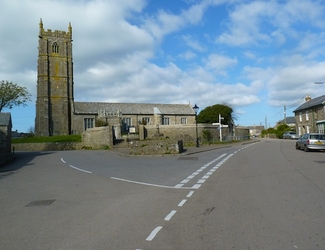stay guide cornwall

St Buryan
St Buryan parish encompasses the villages of St. Buryan, Lamorna, and Crows-an-wra and shares boundaries with the parishes of Sancreed and St Just to the north, Sennen and St Levan to the west, with Paul to the east and by the sea in the south. Named after the Irish Saint Buriana, the parish is situated in an Area of Outstanding Natural Beauty and is a popular tourist destination. It has been a designated conservation area since 1990 and is near many Sites of Special Scientific Interest in the surrounding area. The parish is dotted with evidence of Neolithic activity, from stone circles and Celtic crosses to burial chambers and ancient holy wells. The village of St Buryan itself is also a Site of Special Historic Interest. It hosts many listed buildings including the famous Grade I listed Church. The bells of St Buryan Church (which have recently undergone extensive renovation) are the heaviest full circle peal of six anywhere in the world. There is evidence that the present church lies within the site of an Iron Age enclosure. Christian use dates from the 5th Century when a small chapel may have been established in the name of the Irish "saint" Buriana. The first substantial church was built in the 10th Century on the order of the Saxon king, Athelstan. However, the present building has evolved through rebuilding and restoration in the Norman, Medieval and Victorian periods. The impressive tower is a landmark that is visible from far out to sea as well as in the surrounding countryside. The interior of the church features a rood screen that is true to its original medieval design; a glorious mosaic of intricate detail and motif even after restoration. Throughout St Buryan parish there are stone crosses of the "Celtic Christian" design, at roadside sites and road junctions. The Saxon King Athelstan, granted a charter of extended sanctuary to St Buryan enabling wrongdoers to remain in safety within a mile or so of the church, rather than within the normal sanctuary of the church environs only. The many ancient crosses that still survive around St Buryan may have been sanctuary markers.


 Activities
Activities Beach Guide
Beach Guide Entertainment
Entertainment Food and Drink
Food and Drink Places of Interest
Places of Interest Shopping
Shopping Holiday Services
Holiday Services